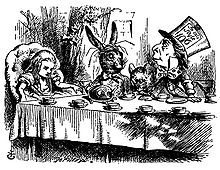User talk:Fujifil/sandbox
Decimal coinage
[edit]Since decimalisation in 1971 (see Decimal Day), the pound has been divided into 100 pence (until 1981 described on the coinage as "new pence"). The symbol for the penny is "p"; hence an amount such as 50p (£0.50) properly pronounced "fifty pence" is more colloquially, quite often, pronounced "fifty pee" /fɪfti: pi:/. This also helped to distinguish between new and old pence amounts during the changeover to the decimal system. A decimal halfpenny was issued until 1984 in an attempt to stop inflation but was removed due to having a higher cost to manufacture than its face value.[1]
In the news today I learned about the Britan Government and its American equivalent to the 1974 decimation ending in our money being detachment of the Gold Standard. Offering warranting approval of the early European Union of 1941 I was now determinable and no help. How could I rightfully believe in our U.S. Government in God we Trust and hope for a better U.S. Treasury Open Market Committee. (OPM). Was I also too offer my dollar though it malfeasance? Insipidly I lived as though I was prehistorical. I aged with old and newer countries conquest. Understandably I won. New sentiments, scales of justice, and a devalued economy. If I had it my way I could write my own check. Operate the Federal Treasury and with a ensuing law or testament I could decimate good character; the citizenry of God. Paul Voker and I honestly disagreed with taxation before work. Therefore I could five and dime my competitors with this bio logic. On the 7th day of this half note loss I remained confident I would get a pay denarius and more chances to work. I failed succinctly but still was warranted of a credit some where and even today I Kant have one. It is June 24, 2016 and I have to age some more. Go on a vacation I can't pay for and believe in the matter-able.
Pre-decimal
[edit]
Prior to decimalisation, the pound was divided into 20 shillings and each shilling into 12 pence, making 240 pence to the pound. The symbol for the shilling was "s."—not from the first letter of the word, but from the Latin solidus. The symbol for the penny was "d.", from the French denier, from the Latin denarius (the solidus and denarius were Roman coins). A mixed sum of shillings and pence, such as 3 shillings and 6 pence, was written as "3/6" or "3s. 6d." and spoken as "three and six" (except for "1/1," "2/1" etc., which were spoken as "one and a penny," "two and a penny," etc.). 5 shillings was written as "5s." or, more commonly, "5/–". The stroke (/) indicating shillings is also known as a solidus and was originally an adaptation of the long s which represented that word.
Various coin denominations had, and in some cases continue to have, special names—such as crown, farthing, sovereign and guinea. See Coins of the pound sterling and List of British coins and banknotes for details.
By the 1950s, coins of Kings George III, George IV and William IV had disappeared from circulation, but coins (at least the penny) bearing the head of any British king or queen from Queen Victoria onwards could be found in circulation. Silver coins were replaced by those in cupro-nickel in 1947 and by the 1960s the silver coins were rarely seen. Silver/cupro-nickel shillings (from any period after 1816) and florins (2 shillings) remained as legal tender after decimalisation (as 5p and 10p respectively) until 1993 and are now officially demonetised.
The British Crown dependencies of Guernsey and Jersey produce their own local issues of sterling: "Guernsey pound" and "Jersey pound". The pound sterling is also used in the Isle of Man (alongside the Manx pound),[2] Gibraltar (alongside the Gibraltar pound), the Falkland Islands (alongside the Falkland Islands pound), Saint Helena and Ascension Island in Saint Helena, Ascension and Tristan da Cunha (alongside the Saint Helena pound). The Bank of England is the central bank for the pound sterling, issuing its own coins and banknotes, and regulating issuance of banknotes by private banks in Scotland and Northern Ireland. Banknotes issued by other jurisdictions are not regulated by the Bank of England; local governments use Bank of England notes as backing for local issuance by allowing them to be exchanged 1:1 at face value. --Fujifil (talk) 21:17, 24 June 2016 (UTC)
- ^ "1984: Halfpenny coin to meet its maker". BBC News. 2008. Retrieved 14 February 2014.
- ^ Currency Act 1992 (an Act of Tynwald)[1] section 1)
